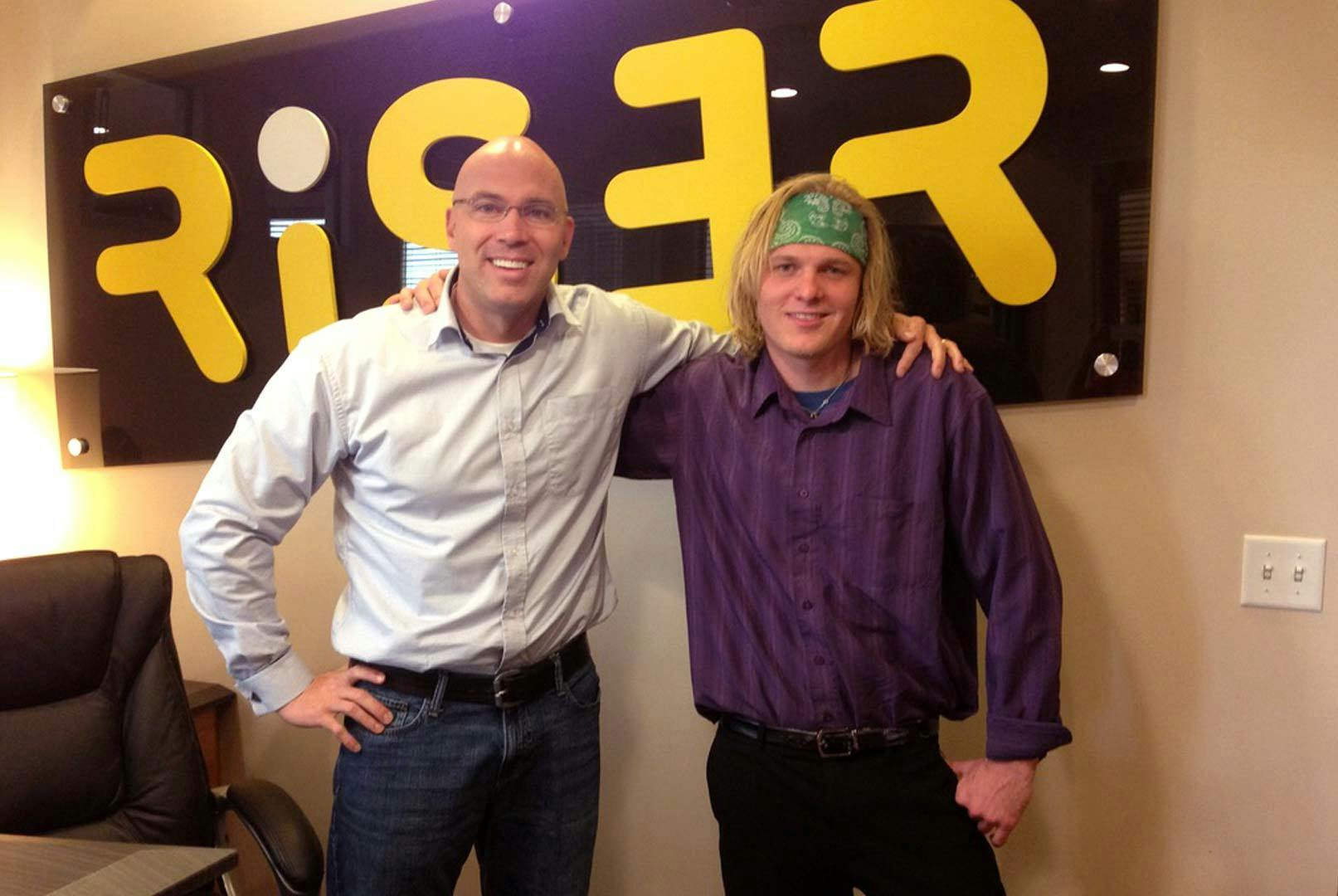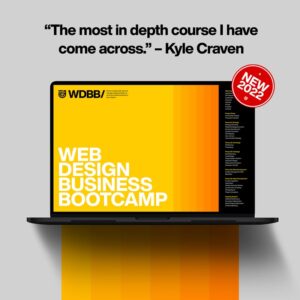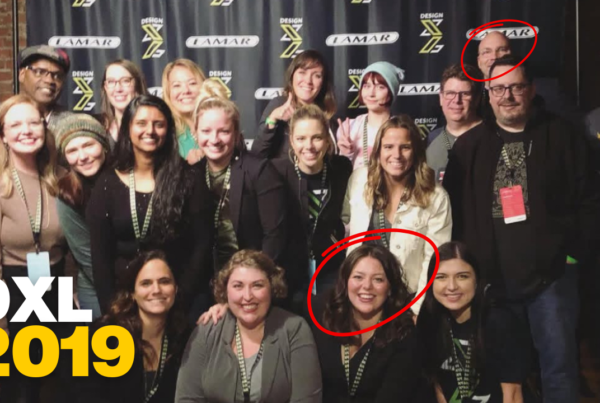I was totally burned out. I was in my second year of freelancing. From an outside perspective, things were going great. “Mike has tons of projects. Looks like he’s slaying it!” But behind the scenes, I was a wreck. I was stressed out and burned out, working 14-16 hours a day. I would get to my desk by 7:00 am, take 30 minutes for lunch and an hour for dinner, then get back to work until late at night. The next day was more of the same. This was my life for a couple of years. The money was great, don’t get me wrong, but the workload was suffocating.
My self-inflicted problem from 2002 through 2004 was that I was afraid to hire. I was so worried about providing for my own family that the thought of being responsible for providing for someone else’s family was more than I could bear. So, I just kept grinding.

This is me and Arek, my first employee ever. He came back for a visit in 2013, about 9 years after I had hired him. He worked at my agency until 2007. We became good friends and still keep in touch sporadically today. He’s now living in New Zealand.
Finally, enough was enough. I was either going to take the risk and hire someone, or I was going to put myself into an early grave. Seemingly out of nowhere, my neighbor mentioned her high school-aged son, who was “really good at computers.” That was his resume. Haha. I met with him. We talked about money, and he said he would work cheap (that was music to my money-fearful ears). We agreed on $10 per hour. I bought another computer, and he started coming over to my basement headquarters after school.
It turned out that he was, indeed, really good at computers! I created template engines for Flash websites, HTML sites, banner ads, and more. I gave him a little training, and he picked things up fast. It made a HUGE difference. And what did it cost me? Not nearly as much as I thought. Ten dollars per hour for about 20 hours per week came to around $800 per month. It was a small price to pay to have a production cranker on the team. He easily earned his wage and more.
This first step made me realize that hiring is really NOT THAT SCARY. Shortly after him, I hired my first full-time employee. This time, a college graduate with a design degree. By the end of that year, I had six employees, office space, and my little design business was billing double what it was with just me.
Here are some of the mindset shifts and business strategies I used to get past that first hire and start growing the agency of my dreams.
Think 3 Months, Not 12 Months
One of my big worries about hiring was adding costs to my annual revenue. The thought of hiring a $60,000 employee made me feel like I was going to make $60,000 LESS profit in the year. It isn’t true. Think in 3-month increments. A $60k annual salary is $5k per month. You mentally take the risk for 3 months. If things don’t work out with the employee in 3 months, you made $15k less profit (not $60k less profit).
Document SOPs and Train Them
You’re not hiring a designer to come in and work willy-nilly however they want. You’re hiring someone to do X, Y, and Z from your task list. Document the task list (Standard Operating Procedures) for all the types of projects you do at your business. Train them on the tasks they are assigned, and let the SOP manage them. If you do this right, you won’t have to sit over their shoulder all day making sure they do a good job. (That won’t work out well for either of you.)
Hire Yourself From Five Years Ago
Your new employee doesn’t have to be able to do everything! They don’t need to be you. In fact, if they are as good as you, they will likely be trying to hire their own employees, just like you. Instead, look for people with the future potential to be like you. You’re looking for someone as good as you were five years ago or ten years ago, not today. Don’t expect them to be as good or better than you (unless you’re willing to pay the hefty salary that comes with it).
Most People Want to Shine
You’re giving a new employee the opportunity to shine. The right people will come to the position with an “I’m going to blow my boss’s mind with how good I do” attitude. Their success is not all on your shoulders. Using the metaphorical baseball example, you are giving your new team member a chance to shine…a chance to bat at the plate. The right people will come into your business and make a huge difference. They will hit home runs (or at least get on base). They will take advantage of their chance to shine (and if they don’t, you have your 3-month mindset in place).
What If It Doesn’t Work Out?
This might scare you: “What if they suck and fail?” I get it. I was scared too. What if it didn’t work out? Well, if it doesn’t work out, you’ll put on your grown-up pants and let them go. You both gave it a shot and sometimes it doesn’t work. It’s business. But let’s stop being so negative. What if it does work out? What if they come in and shine? What if they take so much off your plate and reduce your stress so much that you can go out and find more clients and sell with more confidence that you can execute on bigger and better projects? What if they make it so you can go from charging $5,000 for your projects to $10,000? What if it all turns out amazing? Let’s go into hiring with this optimistic mindset and not be such a doomsayer.
Once I started hiring, things exploded in my business (the good kind of exploding… not the destruction kind). The same can happen for you. If building an agency and growing a team is your dream, get to it.












